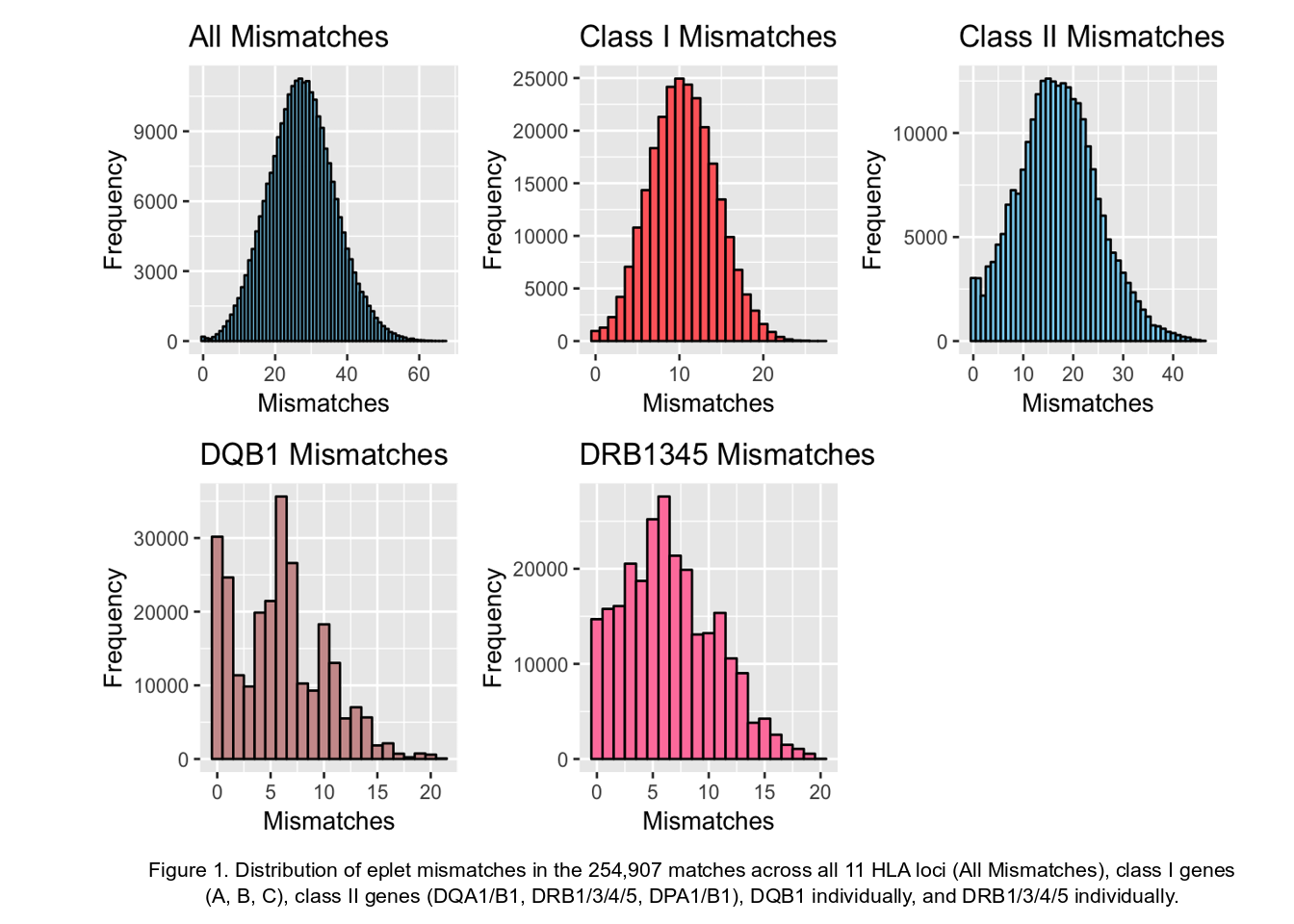The Eplet-Mismatch Landscape in Kidney Patients and Deceased Donors in British Columbia
J. Tran1, O. Gunther2, J. Lan1, M. Kadatz1, R. Sapir-Pichhadze3, P. A. Keown1
1University of British Columbia, Vancouver, BC, Canada, 2Gunther Analytics, Vancouver, BC, Canada, 3McGill University, Montreal, QC, Canada
Meeting: 2020 American Transplant Congress
Abstract number: B-021
Keywords: Donors, unrelated, Epitopes, Kidney transplantation, Major histocompatibility complex (MHC)
Session Information
Session Name: Poster Session B: Kidney Deceased Donor Allocation
Session Type: Poster Session
Date: Saturday, May 30, 2020
Session Time: 3:15pm-4:00pm
 Presentation Time: 3:30pm-4:00pm
Presentation Time: 3:30pm-4:00pm
Location: Virtual
*Purpose: Minimizing quantitative donor/recipient mismatch at the HLA epitope level may optimize graft outcomes in renal transplantation, but the degree to which optimal matching can be achieved remains uncertain. This study was performed to determine the base case for HLA eplet matching in a nominal waiting list cohort of approximately 1,000 kidney patients and deceased donors in an ethnically heterogeneous population of Canada.
*Methods: Next-generation sequencing was performed for all 11 HLA genes on 1049 kidney patients and 243 deceased donors from British Columbia, Canada. Antibody-verified eplets were defined at each gene locus using HLAMatchmaker and compatibility determined by sequential comparison of each donor with the whole recipient population to determine optimal compatibility. Mismatches distributions were calculated by gene locus, by HLA class and by epitype (all 11 genes combined). Donor/recipient ABO status and PRA sensitization were not incorporated in this base case model.
*Results: 254,907 matches were computed across all potential locus combinations. Median epitope mismatches were respectively 27 (IQR: 12) across the full epitype (all HLA loci), 10 (IQR: 5) at Class 1, 17 (IQR: 11) at Class 2, 6 (IQR: 7) at DRB1,3,4.5, and 6 (IQR: 6) at DQB1; maximum mismatches at the same locus combinations were 67, 27, 46, 21, and 20, respectively. All loci analyses had potential mismatches of 0, constituting 12% at DQB1 mismatches, 5.8% at DRB1345, and <5% for all other loci. The proportion of patients with 0 mismatches with at least one donor were 11%, 37%, 65%, 92%, and 99% for all eplets, class I, class II, DRB1345, and DQB1, respectively. Of all the combinations evaluated, <11 mismatches were found in 3% of patients across all loci, with 51% for class 1, 21% for class 2, 85% for DQB1, and 81% for DRB1345.
*Conclusions: Preliminary analysis using eplet translation from high-resolution NGS in a highly heterogenous renal failure population shows a high probability of matching at critical gene loci, particularly HLA DQB1 and DRB1, with anticipated quantitative mismatches of less than 11 at these loci. These base case numbers will be adjusted as ABO, sensitization and other restricting factors are progressively included in the model.
To cite this abstract in AMA style:
Tran J, Gunther O, Lan J, Kadatz M, Sapir-Pichhadze R, Keown PA. The Eplet-Mismatch Landscape in Kidney Patients and Deceased Donors in British Columbia [abstract]. Am J Transplant. 2020; 20 (suppl 3). https://atcmeetingabstracts.com/abstract/the-eplet-mismatch-landscape-in-kidney-patients-and-deceased-donors-in-british-columbia/. Accessed December 18, 2025.« Back to 2020 American Transplant Congress

